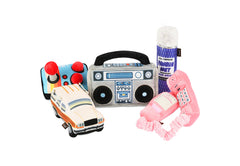If you live in a disaster-prone area, then you probably have some action plans to ensure you’re not surprised and can stay safe during emergencies. But does your plan accommodate your pet? Most people ignore making a plan for their pets until the dying minute when it might be too late. Follow the tips in this article, and your pet’s safety during an emergency will be greatly assured.
1. Get a List of Pet-friendly Accommodations
The last thing you want when evacuating is for your pet to be turned back. You can avoid the tension this brings if you put together a list of places that will accept pets during emergencies. Do local research beforehand and confirm with local officials to know the shelters that will accommodate you and your pet when disaster strikes.
Extend this research to include pet-friendly hotels. Shelters are the first place people run to, so it’s possible that the time you get there, the shelter will be full. Also, make sure you study their protocols for accommodating pets.
2. Create an Emergency Kit for your Pet
Another thing you should do before emergencies are to put together an emergency kit. According to the CDC, the following should be in an emergency kit:
- A pet carrier for your pets, one for each pet you have. On the carrier, write the pet’s name, your name, and contact information.
- Food and water for at least 2 weeks for each pet
- For cats, a litter box and litter
- For dogs, plastic bags for poop
- Medications for at least 2 weeks
- Medical records, including a record of vaccination for rabies and other diseases, prescription medications, and medical history
- Sturdy leashes or harnesses
- Microchip number
3. Get a Rescue Alert Sticker
A rescue alert sticker informs rescue workers that there are animals in the house so they can put in place protocols for extraction. The sticker should be by your front door or any conspicuous. If you get out of the house on your own or with the aid of rescue workers when the property becomes unhabitable, cross out the sticker and put ‘evacuated’ so rescue workers know your pet is no longer in the house.
4. Keeping your Pet Calm
The turmoil of a disaster can set your pet on edge. You’ll probably be on edge yourself, but a restless pet can worsen things for you. That’s why it’s important to keep it calm as possible. You can pet it, talk to it calmly, offer it water to drink, cover it with a heavy blanket for warmth. You can also enquire from your vet for any medication for reducing stress, as long as it doesn’t conflict with any current medications.
If you have to evacuate from your home, it’s important to keep your pet as calm as possible in the new surroundings. In the new environment, mark out a place for food, water, and bedding for your pet. Familiar sights will keep your pet calm in larger, unfamiliar surroundings. Also, ensure that your pet has an ID and is micro-chipped. If it goes missing during the mayhem, you are likely to be reunited with your pet companion sooner than later.
Your pet is counting on you to keep it safe. It’s part of your family. It brings you joy, laughter, and occasionally, a good dose of annoyance. Don’t let it down when it matters the most.






